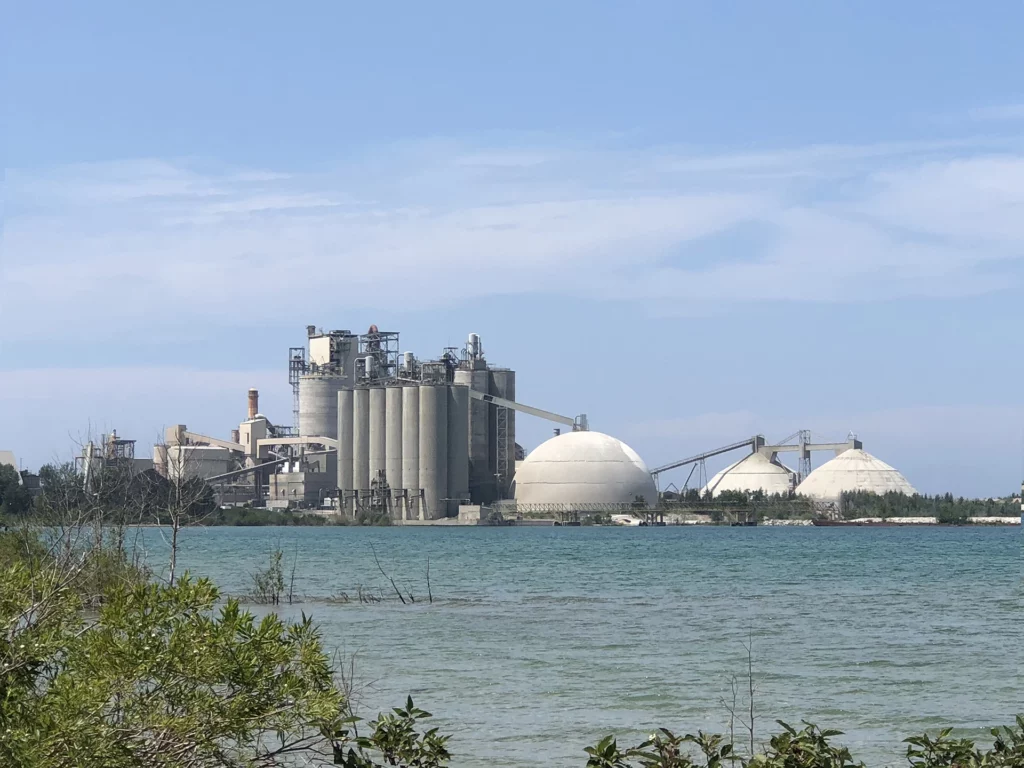St Marys Cement, Charlevoix Plant
 With the use of alternative fuels and lower-carbon clinker replacements, St Marys Cement is reducing carbon emissions while increasing energy efficiency at its Charlevoix, Michigan plant.
With the use of alternative fuels and lower-carbon clinker replacements, St Marys Cement is reducing carbon emissions while increasing energy efficiency at its Charlevoix, Michigan plant.
To achieve carbon neutrality, cement plants are combining a variety of tactics to cut emissions and be responsible environmental stewards. St Marys Cement, part of Votorantim Cimentos, is reducing carbon emissions through several strategies, including increasing the use of non-fossil fuels, improving energy efficiency and using lower-carbon cement blends.
In 2021, St Marys strengthened its stance on power consumption reduction as a priority goal, implementing energy management practices to increase the efficiency of its Charlevoix, Michigan plant’s operations and reduce its carbon footprint. The plant formed an Energy Conservation Committee for benchmarking and evaluations, closely monitoring operations to maximize efficiency while reducing power consumption.
The plant has also invested in a new alternative fuels injection system that significantly reduces the use of coal and petcoke. Compared with the previous year, the plant achieved a 7.4% (10.6 kWh/t) reduction in power consumption per ton of cement produced and increased the thermal substitution rate (TSR) to 25%.
Another step in reducing St Marys’ carbon footprint – and helping consumers along the value chain – is changing the product portfolio to lower carbon cements. The plant has eliminated Type I cement and completely converted to portland-limestone cement (Type IL), a lower-carbon cement blend with a higher limestone content than the traditional Type I.
In addition, the plant is performing trials with a limestone and slag blended cement which will be available in the markets in the near future. This, in combination with the shift to higher fossil fuel replacement, will result in a further reduction in CO2 emissions in the next three years.
St Marys Cement is committed to implementing solutions that further ours and the industry’s sustainability goals. It is even more exciting when these innovations, like modifications in our alternative fuel injection system, not only reduce carbon footprints, but also increase efficiency on a plant scale.
With threefold efforts in reducing clinker content, coal and petcoke utilization and overall power consumption, StMarys is making strides to reduce its carbon footprint. In alignment with the ACA Roadmap to Carbon Neutrality, St Marys is adapting and innovating to meet the industry’s goal of reaching carbon neutrality by 2050.
